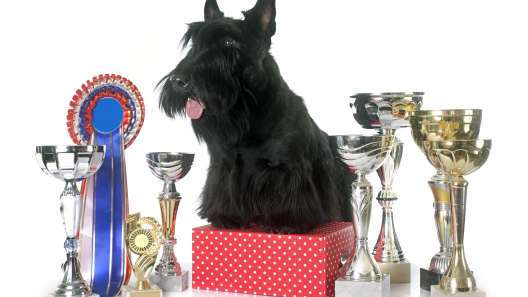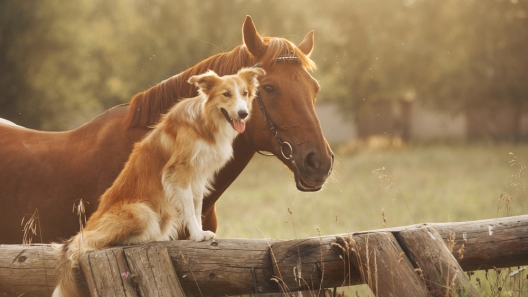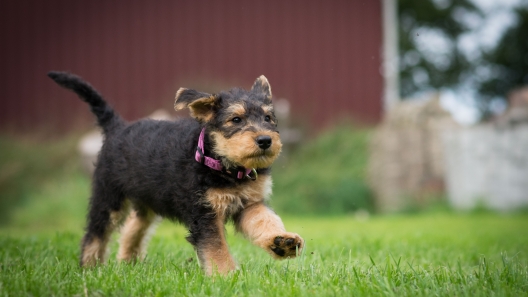-
Activity Level:
high
-
Shedding Level:
low
-
Grooming Level:
moderate
-
Trainability:
high
-
Good for Novice Owners:
low
-
Adaptability:
moderate
-
Kid/Pet Friendly:
often
-
Prey Drive:
high
-
Watchdog:
very alert
- Average Size: Medium
- Average Lifespan: 11-14 years
- Registered?: aca, akc
Airedale Terrier Dog Breed Information
Overview
Temperament
Adaptability
Health
Owner Experience
Grooming
Activity Level
Size
Life Span
Did You Know?
The Airedale Terrier is known as the “King of the Terriers” for a reason. That’s one big terrier! One of the facts about Airedale Terriers is that they are the largest dog breed in the Terrier Group.
This terrier originates from The Valley of Aire in Yorkshire, England. Black-and-tan terriers from the 1800s were originally crossed with Otterhounds for a hunting dog adept at chasing down and catching otters. This breed is intelligent and playful. They are exceptional sporting dogs, but also can serve as capable working dogs.
The British army used Airedale Terriers as messenger and military dogs during World War I. The Airedale Terrier was also one of the earliest dog breeds to be used as a police dog in Germany and in Great Britain. The Airedale was also one of the first dog breeds to be used as search and rescue dogs.
Although this dog breed was originally called the Waterside or Bingley Terrier, it became known as the Airedale Terrier in 1878. The American Kennel Club (AKC) recognized it in 1888 as part of the Terrier Group. They continue to be a popular show dog breed in addition to still serving a variety of working dog roles and also just being a beloved family companion.
Airedale Terriers are friendly, intelligent, and courageous dogs. This dog breed is versatile. They are hunters, athletes, working dogs, and companions. They are happiest when they have a job to do, even if that job is playing with and entertaining children. These are the largest of the terriers, so they can be determined, bold, and have an independent streak.
They do tend to get along well with children, showing a docile nature and patient temperament when they are well-socialized. They have a strong prey drive and can be prone to chase. Redirection and continuous training and socialization can help manage prey drive in dogs, but won’t make this instinctual behavior disappear.
These dogs are courageous guardians with an instinct to protect their home and family. They tend to be wary of strangers, but will tend to warm up once introduced provided they are well-socialized. Early socialization and training are important with any dog breed and are especially important with Airedales as they are large, protective, and sometimes stubborn.
They also tend to be prone to barking a lot as they will bark to alert you. Training your dog to stop barking early on can help redirect the behavior and train with cues to keep barking to an alert instead of a continuous nuisance.
Airedale Terriers are generally not a good fit for apartment living. As a terrier, this dog loves to dig, chase, and also is prone to barking. If trained early, the barking can be limited to certain situations. The Airedale is full of energy and is best suited for a family with an active lifestyle and a home where they have room to run in a securely fenced-in yard.
As one of the best dog breeds for farms, they also tend to do well in farm or ranch-style environments. If you have a busy lifestyle that doesn’t leave much time for activities with your dog or live in a small space, this may not be the dog breed for you.
This is an intelligent dog breed with a high energy level that gets bored easily and does not like long stretches of alone time. If left without enough exercise or mental stimulation, they will entertain themselves, which can result in destructive or unwanted behavior; common signs your dog is bored.
While the Airedale Terrier is not especially sensitive to disturbances in its environment, there are some things to be aware of. They will do well in moderate and cooler climates, although they may need a coat and other winter dog products when the temperatures drop too low. They love to romp around on a warm day, but do not do well in excessive heat.
Potential health concerns to be aware of Airedale Terriers can include hip dysplasia, elbow dysplasia, and thyroid issues. They also tend to be prone to skin issues and irritation. Good breed practices and the health of the parents make a big difference in the health of Airedale Terrier puppies.
Reputable breeders will screen their dogs to ensure they are not passing preventable issues to puppies. Make sure you ask about the health and genetic history of both parents. You can also ask about any health tests or clearances that have been done. The Airedale Terrier Club of America recommends a cardiac exam, a hip evaluation, a kidney disease screening (CHIC), and an opthalmologist evaluation.
As a barrel-chested breed, the Airedale Terrier is also at risk for bloat. Bloat in dogs can be dangerous and quickly becomes fatal if gastric torsion occurs (i.e. the stomach flips). It’s important to know how to reduce the risk and what symptoms mean that it’s time to get to the emergency vet.
Airedale Terriers are very intelligent; they are strong and can be rambunctious. They are also the largest of the terriers, which means they have an independent mind and may be a bit stubborn at times. In fact, they are considered one of the most independent dog breeds. This dog breed is generally a better fit for experienced dog owners and is usually not recommended for novice owners.
Less experienced dog owners can have success training an Airedale, but they will need to be prepared for extensive obedience and puppy training classes. Due to their intelligence and high energy, Airedale Terriers are easily bored, especially with repetition.
When it comes to training, varying the training sessions and keeping them short can keep your dog engaged during training sessions and will be more successful with Airedales. This dog will also hold a grudge, so it’s important to keep training interactions positive. They are unforgiving of any treatment that they consider harsh as this damages their bond and trust in you. Consistent and positive obedience training is a necessity with an Airedale Terrier.
The Airedale Terrier has a double coat. The top coat is dense and wiry and is manageable. Although it has a wavy texture, it is not curly. The undercoat is short and soft. However, Airedale Terriers are low shedders, so grooming is relatively easy. A weekly brushing is usually sufficient to remove dead hair and keep the coat healthy. Professional grooming that includes hand-stripping or clipping is recommended 3-4 times a year.
The common coat color is tan with black or grizzle across the back, often referred to as a “saddle”. Grizzle is black mixed with gray or white. Some Airedale Terriers are born without a saddle. Skin issues can be common in Airedales. Frequently checking this dog breed for irritation of the skin can help catch any skin issues early.
As with all dog breeds, you’ll want to get your puppy used to getting their teeth brushed, ears checked, and nails trimmed early on. Their nails will need to be trimmed once or twice monthly and their ears checked weekly. You can clean your dog’s ears carefully as needed to help prevent ear infections.
You’ll want to brush your dog’s teeth every day. Daily tooth brushing is ideal for keeping tartar buildup at bay and avoiding periodontal disease later in life. Daily dental care along with cleanings at the vet when needed early and throughout your dog’s life helps prevent painful dental diseases later in life.
Terriers are known for having high energy levels and the Airedale Terrier is no different. With persistent training and plenty of exercise, however, that energy can be channeled into safe and productive outlets.
For a happy, balanced, and well-behaved Airedale, make sure they have plenty of room to run, dig, and unwind. This dog breed is also prone to chewing, so it’s important to have sturdy chew toys available and to start training early on what is and is not acceptable as a chew toy.
Several walks a day, time to run around in a fenced-in area, and play sessions should be sufficient to keep your Airedale happy. They will also likely still be up for more activity if you are. You can also help the “King of Terriers” expel some energy by taking them on a hike or on a trip to the dog park.
Too much impact too early can damage developing bones and joints. So, make sure things are kept low impact until your vet clears them for more. Once puppies are finished growing and developing, you can even start taking runs with your Airedale. They are one of the dog breeds that make good running partners. As a sporting dog, they are athletic and tend to excel and enjoy a wide variety of activities.
Fully-grown Airedale Terriers usually stand 22-24 inches tall at the shoulder and weigh 50-70 pounds.
An Airedale Terrier generally lives 11-14 years on average.
Airedale Terriers have been presidential pups; popular with U.S. Presidents and famous authors. The U.S. Presidents who have owned Airedale Terriers include Woodrow Wilson, Warren G Harding, and Calvin Coolidge. John Steinbeck, the author of “Grapes of Wrath” and “Of Mice and Men”, also owned an Airedale Terrier.









